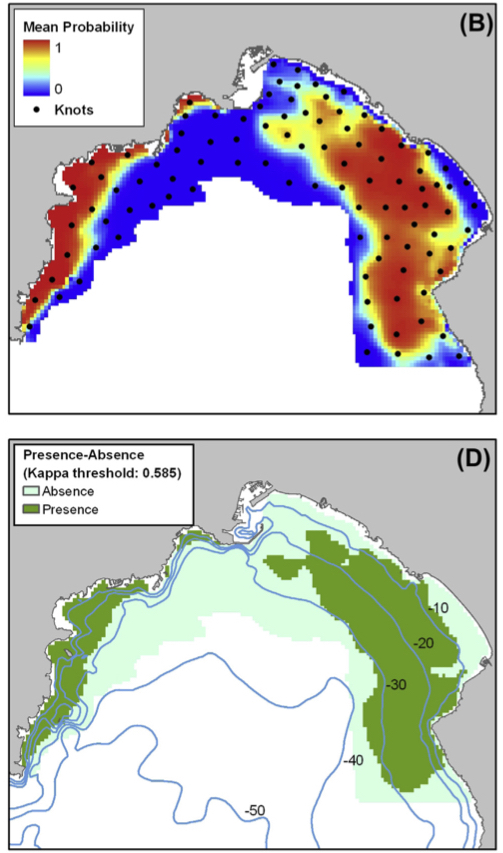ABSTRACT
We implement a Bayesian spatial approach to predict and map the probability of occurrence of seagrass Posidonia oceanica at high spatial resolution based environmental variables. We found that depth, near-bottom orbital velocities and a spectral pattern of Landsat imagery were relevant environmental variables, although there was no effect of slope or water residence time.
We generated a data inventory of P. oceanica samples at Palma Bay, NW Mediterranean, from three main sources: side scan sonar, aerial imagery and a customized drop-camera system. A hierarchical Bayesian spatial model for non-Gaussian data was used to relate presence-absence data of P. oceanica with environmental variables in the presence of spatial autocorrelation (SA).
A spatial dimension reduction method, the predictive process approach, was implemented to overcome computational constraints for moderately large datasets. Our results suggest that incorporating spatial random effects removes SA from the residuals and improves model fit compared to non-spatial regression models. The main products of this work were probability and uncertainty model maps, which could benefit seagrass management and the assessment of the ecological status of seagrass meadows.








